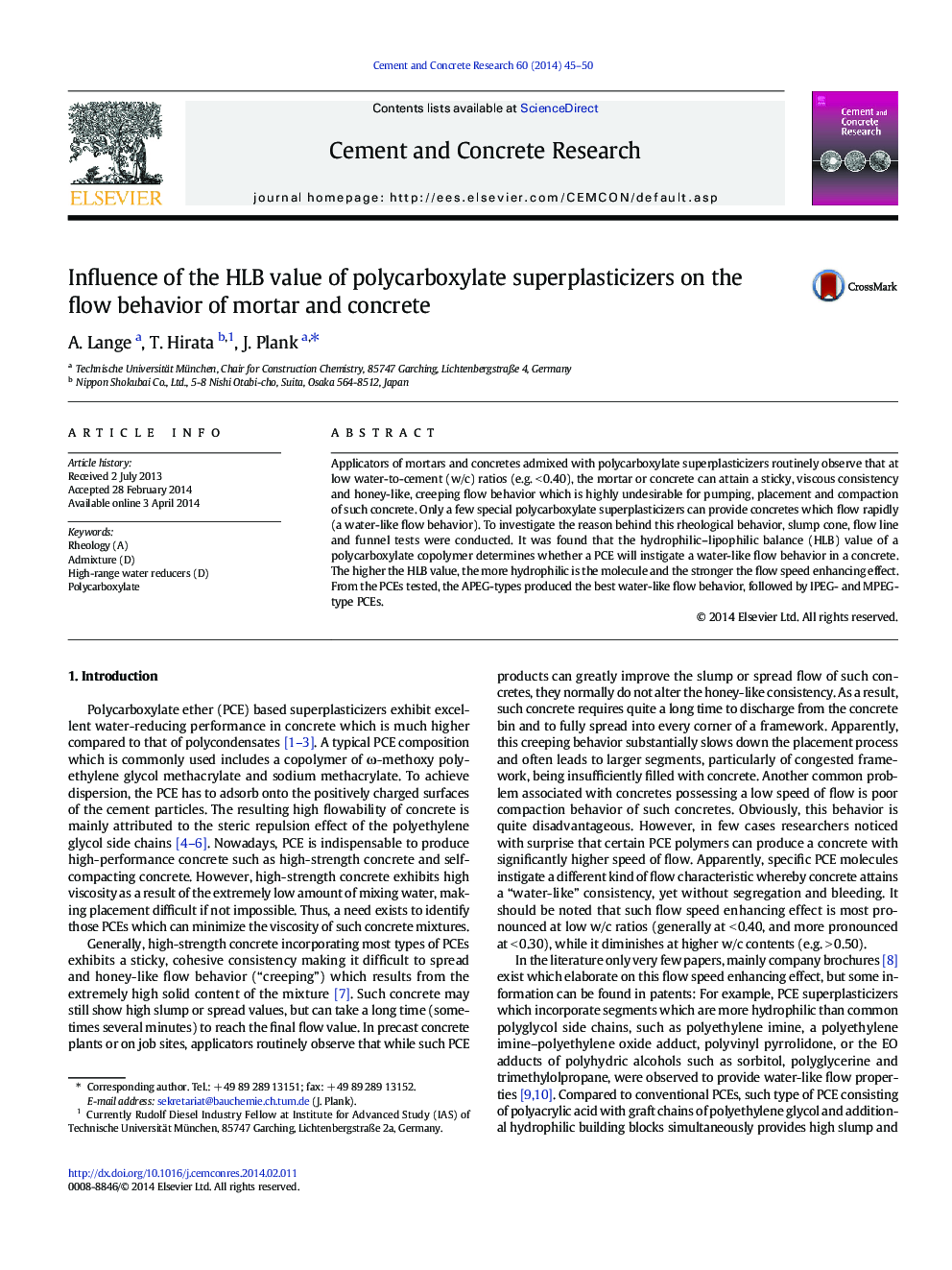| Article ID | Journal | Published Year | Pages | File Type |
|---|---|---|---|---|
| 1456300 | Cement and Concrete Research | 2014 | 6 Pages |
•PCEs can instigate fast or slow speed of flow to concrete.•This effect is observed only at w/c ratio < 0.4.•The speed of flow is dependent on PCE composition.•Only PCEs exhibiting high HLB value provide fast flow.•HLB value describes hydrophilic–lipophilic balance in macromolecule.
Applicators of mortars and concretes admixed with polycarboxylate superplasticizers routinely observe that at low water-to-cement (w/c) ratios (e.g. < 0.40), the mortar or concrete can attain a sticky, viscous consistency and honey-like, creeping flow behavior which is highly undesirable for pumping, placement and compaction of such concrete. Only a few special polycarboxylate superplasticizers can provide concretes which flow rapidly (a water-like flow behavior). To investigate the reason behind this rheological behavior, slump cone, flow line and funnel tests were conducted. It was found that the hydrophilic–lipophilic balance (HLB) value of a polycarboxylate copolymer determines whether a PCE will instigate a water-like flow behavior in a concrete. The higher the HLB value, the more hydrophilic is the molecule and the stronger the flow speed enhancing effect. From the PCEs tested, the APEG-types produced the best water-like flow behavior, followed by IPEG- and MPEG-type PCEs.
